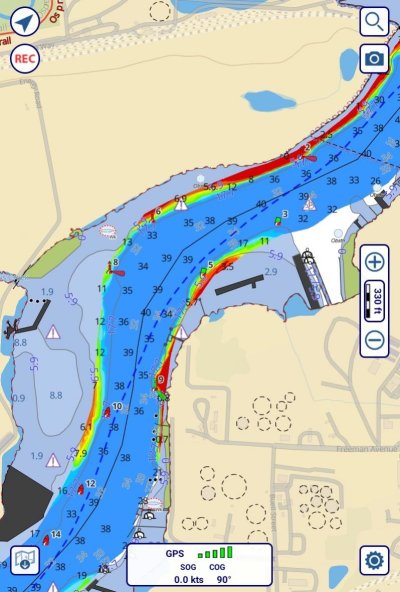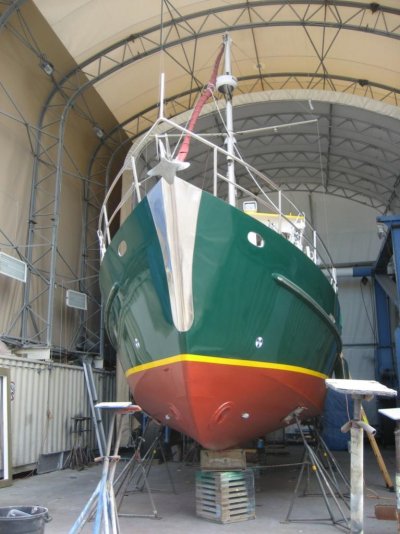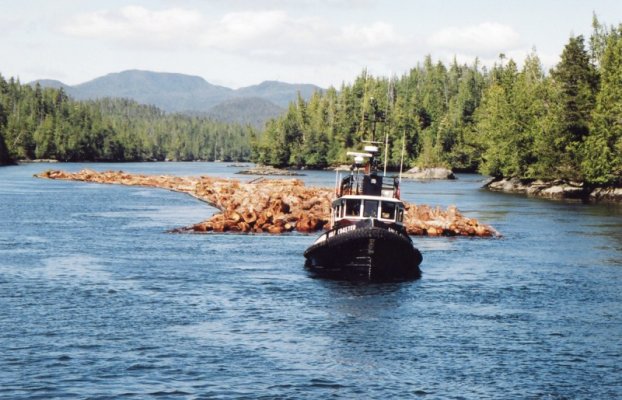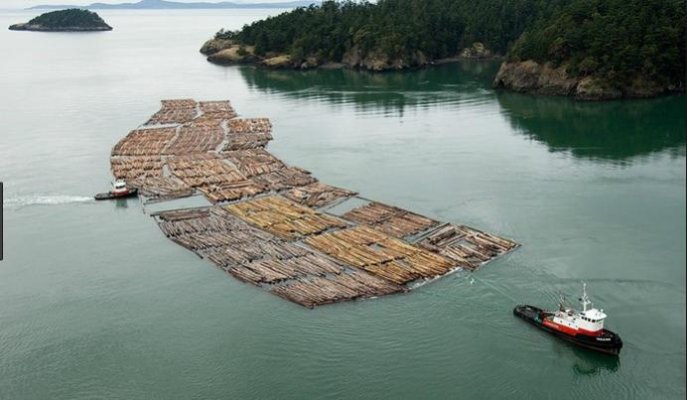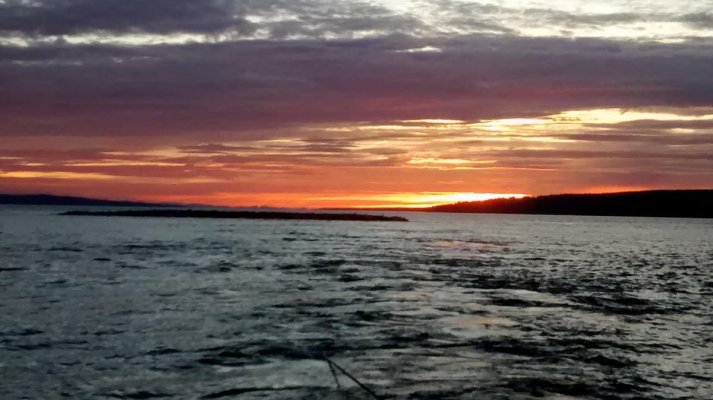Roger Long
Senior Member
I’m curious if other people here are increasingly having experiences like this on the ICW. I’ve gotten lots of confirmation from other social media sites.
You see a vessel coming towards you, show them a bit of port side to confirm a standard meeting and start edging over to the starboard side of the channel. But, they don’t move the other way. They keep coming, pushing you over until your depth sounder makes you back off and stop while they go by with yards and yards of deep water on the proper side of the channel. They’ll give you a nice wave because they think you are stopping for the pass and not because they nearly forced you aground. You may see that they have a burgee identifying them as fans of a fellow who provides GPS tracks delineating, according to his web site, the line of deepest water from Norfolk to Key West.
This reference is a great resource which I love to check my routes against in pre-departure planning. I admire and appreciate the time and effort he has selflessly devoted to making ICW travel safer. However, his disclaimer’s are just of the “The prudent navigator will not rely...” variety. This has led to a sub culture of anxious or inexperienced boaters who are very reluctant to move off the track. I have seen social media posts from people asking how they can navigate Chesapeake Bay and Long Island Sound without any tracks to follow. People who have experienced what I have report calling the offending vessel on the radio and being told that they are following ____’s track. Some have even claimed to have the right of way because they are following a “published route” (although it’s not clear in those cases that it wasn’t the Magenta Line). I’ve also seen posts inquiring how to load these tracks into an autopilot so the boat will follow them automatically. Yikes!
I’m sure 90% of boaters using these tracks do so responsibly and with due regard for the rules of the road. However, breathless Facebook posts like, “We just finished the ICW and couldn’t have done it without following your tracks.”, are turning them into the new Magenta Line for many boaters. But, the Magenta Line generally followed the center of the channel while the line of deepest water may often be on the wrong side.
I decided to load the Norfolk to SC track into a navigation program and see where it might lead a stubborn track follower down the wrong side of the channel or otherwise get them in trouble during next fall’s snowbird migration. I didn’t even make it as far as Gilmerton Bridge! Look at the attached screen shot. A southbound vessel going around the inside of that fairly blind curve could have a nasty surprise. This isn’t an artifact of the track being laid down northbound because he was on the wrong side at the next bend for northbound transit just to the south. These tracks are developed from the provider’s GPS records which are then tweaked in shoaling and problem areas according to USACE surveys and other data. It bother’s me that someone being held out as such an expert that some people think they must follow his tracks like they were a train is driving like this.
To be fair, the provider of these tracks also presents lots of information about navigation programs and depth information to assist boaters in maneuvering responsibly around other vessels and complying with the rules of the road. However, he seems very resistant to recognizing that an increasing number of boaters are not looking beyond simply downloading and following the tracks. I’ve urged him to provide a paragraph to his track download sites clarifying what the tracks are, what they are not, and making it clear that responsible navigation will often require departure from them. He’s promised an article for the next addition of an online cruising guide but made no changes to the track download sites.
Are you meeting, and almost running into, these people?
You see a vessel coming towards you, show them a bit of port side to confirm a standard meeting and start edging over to the starboard side of the channel. But, they don’t move the other way. They keep coming, pushing you over until your depth sounder makes you back off and stop while they go by with yards and yards of deep water on the proper side of the channel. They’ll give you a nice wave because they think you are stopping for the pass and not because they nearly forced you aground. You may see that they have a burgee identifying them as fans of a fellow who provides GPS tracks delineating, according to his web site, the line of deepest water from Norfolk to Key West.
This reference is a great resource which I love to check my routes against in pre-departure planning. I admire and appreciate the time and effort he has selflessly devoted to making ICW travel safer. However, his disclaimer’s are just of the “The prudent navigator will not rely...” variety. This has led to a sub culture of anxious or inexperienced boaters who are very reluctant to move off the track. I have seen social media posts from people asking how they can navigate Chesapeake Bay and Long Island Sound without any tracks to follow. People who have experienced what I have report calling the offending vessel on the radio and being told that they are following ____’s track. Some have even claimed to have the right of way because they are following a “published route” (although it’s not clear in those cases that it wasn’t the Magenta Line). I’ve also seen posts inquiring how to load these tracks into an autopilot so the boat will follow them automatically. Yikes!
I’m sure 90% of boaters using these tracks do so responsibly and with due regard for the rules of the road. However, breathless Facebook posts like, “We just finished the ICW and couldn’t have done it without following your tracks.”, are turning them into the new Magenta Line for many boaters. But, the Magenta Line generally followed the center of the channel while the line of deepest water may often be on the wrong side.
I decided to load the Norfolk to SC track into a navigation program and see where it might lead a stubborn track follower down the wrong side of the channel or otherwise get them in trouble during next fall’s snowbird migration. I didn’t even make it as far as Gilmerton Bridge! Look at the attached screen shot. A southbound vessel going around the inside of that fairly blind curve could have a nasty surprise. This isn’t an artifact of the track being laid down northbound because he was on the wrong side at the next bend for northbound transit just to the south. These tracks are developed from the provider’s GPS records which are then tweaked in shoaling and problem areas according to USACE surveys and other data. It bother’s me that someone being held out as such an expert that some people think they must follow his tracks like they were a train is driving like this.
To be fair, the provider of these tracks also presents lots of information about navigation programs and depth information to assist boaters in maneuvering responsibly around other vessels and complying with the rules of the road. However, he seems very resistant to recognizing that an increasing number of boaters are not looking beyond simply downloading and following the tracks. I’ve urged him to provide a paragraph to his track download sites clarifying what the tracks are, what they are not, and making it clear that responsible navigation will often require departure from them. He’s promised an article for the next addition of an online cruising guide but made no changes to the track download sites.
Are you meeting, and almost running into, these people?

